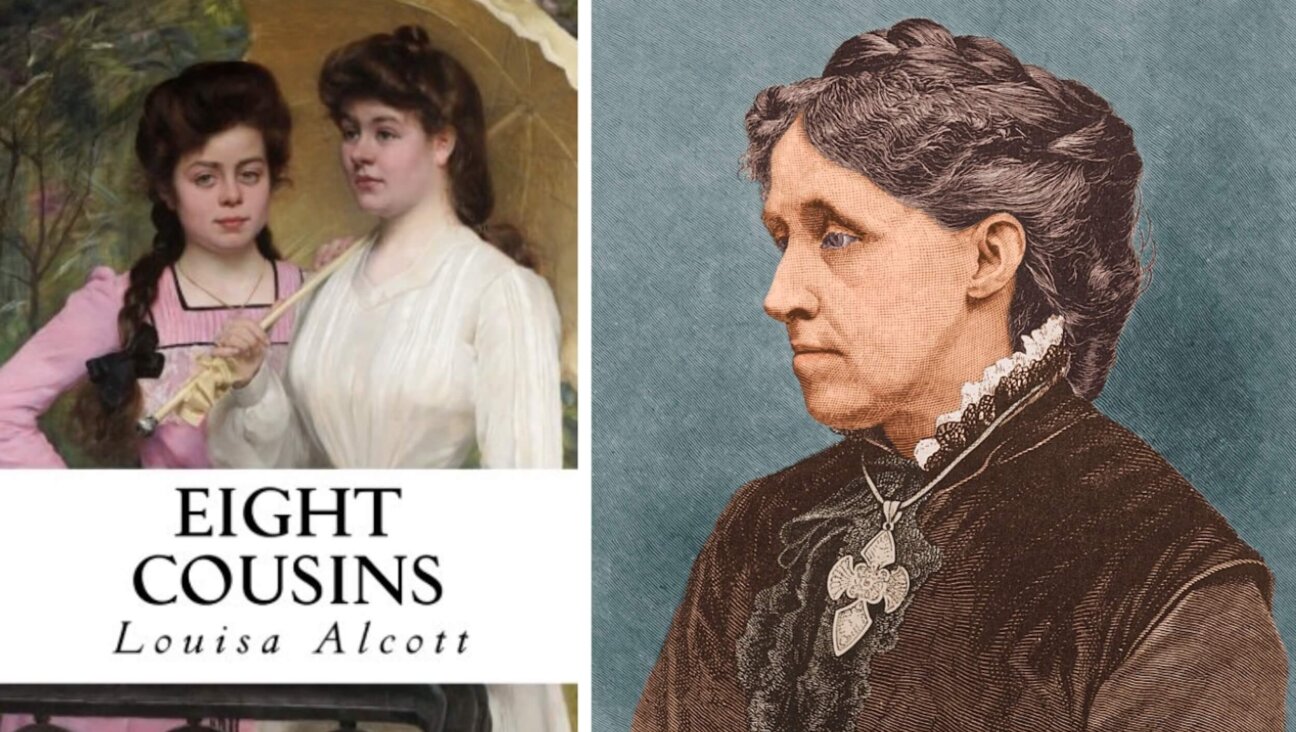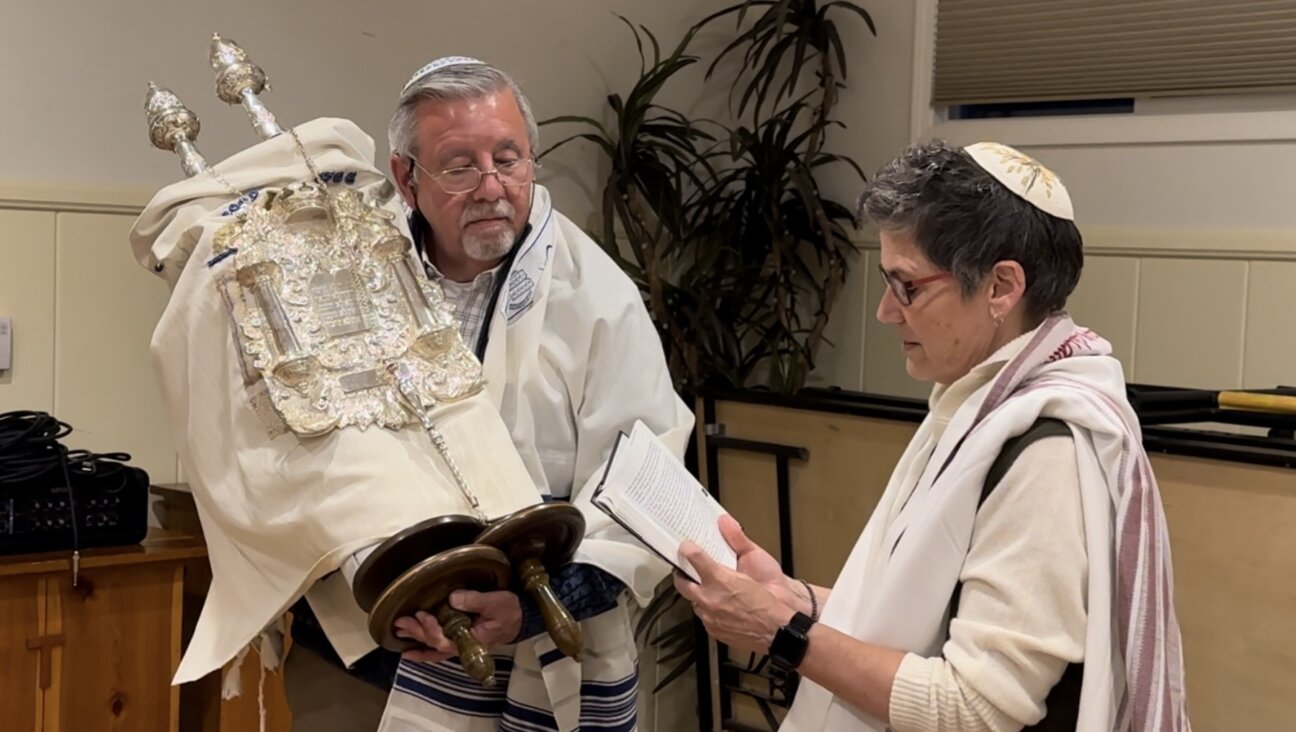Hasidic Tales and Prayer-Poems

Graphic by Angelie Zaslavsky

Hearts on Fire: In Hasidic thought, prayer is emphasized over study. Image by MELANIE EINZIG/WWW.EINZIGPHOTOS.COM
A Hidden Light: Stories and Teachings of Early HaBaD and Bratzlav Hasidism
By Zalman Schachter-Shalomi with Netanel Miles-Yepez
Gaon Books, 490 pages, $31.95
All Breathing Life Adores Your Name: At the Interface Between Poetry and Prayer
By Zalman Schachter-Shalomi
Gaon Books, 212, pages, $18.95
In her introduction to “A Hidden Light,” Susannah Heschel notes that Hasidism offers “teachings, texts, and stories… as guides” to the inner journey of transformation. This book, by Rabbi Zalman Schachter-Shalomi (sometimes called the zayde, or grandfather, of Jewish Renewal) along with student-collaborator-amanuensis Netanel Miles-Yepez, seeks to place those guides in every reader’s hand.
“A Hidden Light” is the sequel to Schachter-Shalomi’s 2009 “A Heart Afire: Stories and Teachings of the Early Hasidic Masters,” which collected and contextualized stories of the Ba’al Shem Tov and the Maggid of Mezritch, among others. This volume focuses on the figures, tales and teachings of HaBaD and Bratzlav Hasidism.
A tremendous amount of knowledge is distilled into these pages. The sheer number of names, rebbes, dynasties and towns may overwhelm readers. To Schachter-Shalomi, each of these is an intimate friend.
The authors interweave the life stories of Nachman of Bratzlav and of Schneur Zalman of Liadi, founders, respectively, of Bratzlav Hasidism and of HaBaD (also known as Chabad; in the HaBaD spelling, the capitalized letters represent a Hebrew acronym for three different aspects of God), with their parables and teachings. In one anecdote, Zalman tells his son that as a young man, he had the choice of studying with the Vilna Gaon or with the Maggid of Mezritch: “In Vilna, they teach you how to study, and in Mezritch, they teach you how to pray.” Of course, the binarism is overstated, but Zalman’s choice — and Schachter-Shalomi’s — is clear.
HaBaD and Bratzlav Hasidism differ in numerous ways, but Schachter-Shalomi and Miles-Yepez find areas of common ground: between, for example, Nachman’s writing about “running and returning” and Zalman’s writing about how a tzaddik, a righteous person, falls and rises again.
Here, as in “A Heart Afire,” Schachter-Shalomi and Miles-Yepez note correlations with teachings from other traditions — for instance, comparing Jewish mussar, or ethical teaching and practice, with the Melami Sufi path of living a moral and sincere life “for the sake of God alone.” The result is a sense of commonality between the mystics of different traditions, for whom connection with divinity trumps the outward divisions between one spiritual path and another.
Of particular interest is Schachter-Shalomi’s translation of Reb Nahman’s “Bo el Paroh” (“Go to Pharaoh”) teaching, which Schachter-Shalomi calls “Torah of the Void.” In an attempt to slow down the reader, he renders this prose text as poetry. Here is how he renders Nahman’s description of tzimtzum, God’s withdrawal in order to manifest creation.
This Void was needed
For the world’s sake,
So that it could be put into
a place.
Don’t strain to understand the
Void!
It is a Mystery not to be realized
Until the future is the now…
At times, Shachter-Shalomi’s sentiment verges on sentimentality (which I know would make my Master of Fine Arts professors wince). But this poem works for me both as a poem (because of its linguistic sparseness) and as a Hasidic teaching. And I always admire the impulse to render a dense mystical text in a manner that preserves its allusions and invites the reader in. Enter “All Breathing Life Adores Your Name: At the Interface Between Poetry and Prayer.”
The poems in “All Breathing Life” are not translations; they are, rather, “free verse evocations of themes and imagery inspired by our liturgy and collective psyche.” Schachter-Shalomi wants to give us the experience of reading and praying these texts as he does, even though we may not have his hypertextual awareness of references, quotations and implications.
“All Breathing Life” arose out of Schachter-Shalomi’s dismay at the Jewish absence from anthologies of spiritual writing featuring Hindu, Sufi and Christian writers. “[In] vain did I look for Jewish writings that would show heart, soul, and spirit,” he writes. “I knew well that they existed, but alas, only in their Hebrew originals.” In this book, he renders those Hebrew originals in his own idiosyncratic verse.
These poems are meant to be prayed, not merely read for information or style. And the poems I like best are the ones I’ve actually had the chance to sing aloud in community. Take, for instance, his rendering of “Yedid Nefesh,” which begins:
You who love my soul
Compassion’s gentle source,
Take my disposition and shape it
to Your will.
Like a darting deer I will flee to
You.
Before Your glorious Presence
Humbly do I bow.
Let Your sweet love
Delight me with its thrill
Because no other dainty
Will my hunger still.
Singing these words in community on the Sabbath is a powerful experience. At the core of Shachter-Shalomi’s teaching is the attempt to open up the possibility to feel really connected with both God and community through these Hasidic prayers and teachings, despite all the ways in which neither I nor many of its intended readers fits the classical Hasidic mold.
Post-it notes proliferate on my copy of “All Breathing Life,” showing which poems I most often use in my own prayer life: “Ana B’Khoach,” “Nishmat Kol Chai,” “We Are as Clay,” Psalm 27. (Many of these are also available as audio recordings on the publisher’s website.) I share these with my congregation and with my blog readership. Sometimes I pray them by myself.
At times the poems can seem clunky in their too faithful rendering of Hebrew wordplay. And sometimes the dense welter of stories in “A Hidden Light” is too much; it can be hard to keep track of the names and relationships and dynasties. Both of these books are best read a morsel at a time.
But I am glad to have both of these new books on my shelves as compendia of resources that would otherwise be inaccessible to most contemporary readers. Even well into his 80s, Schachter-Shalomi is still opening Judaism’s rich treasures to share with a wider world.
Rabbi Rachel Barenblat was ordained by ALEPH: Alliance for Jewish Renewal. She is the author of “70 Faces: Torah Poems” (Phoenicia, 2011), and blogs as The Velveteen Rabbi.















